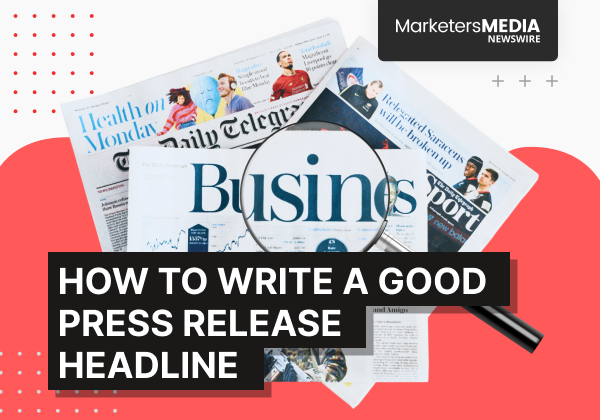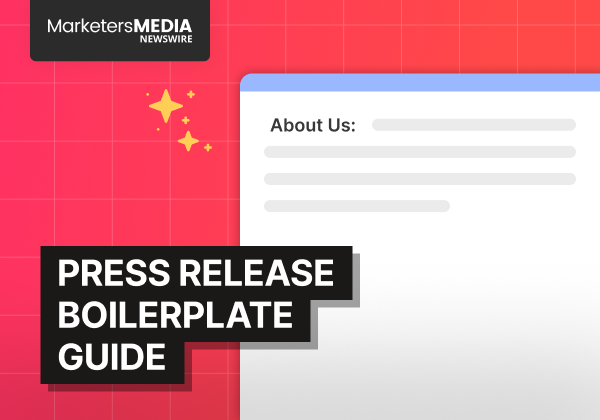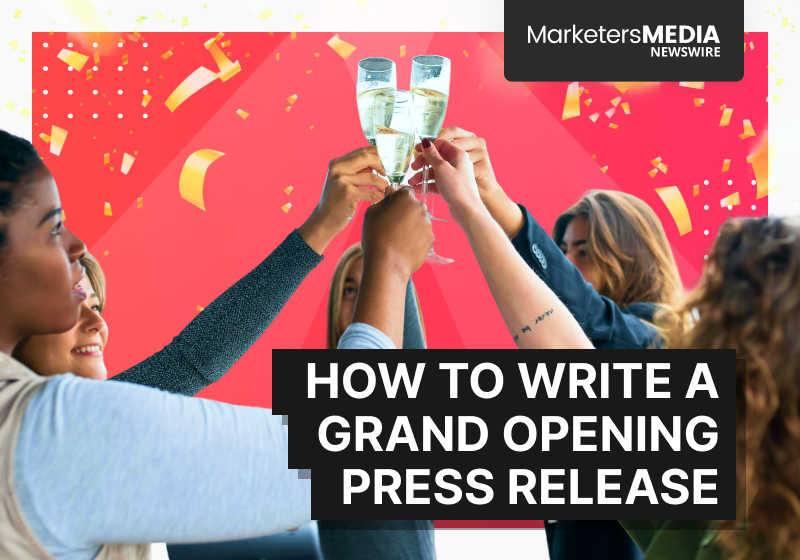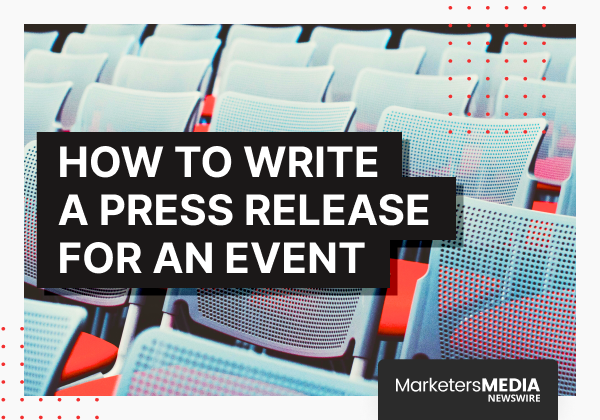Headlines make the first impression.
And with how we constantly skim, scan, and dismiss headlines, it’s not an exaggeration to say that your headline can make or break your press release.
If your headline sucks, that’s probably the end of it.
Even if your press release body entrails the most important details in uncovering Blackbeard’s hidden treasure, no one will spare it another glance.
Okay, this is a poorly fabricated example, but I hope you get the point. The importance of a good headline is to the extent that everything can fail if you get this one thing wrong.
What Makes a Good Press Release Headline?
Good press release headlines should meet these guidelines:
#1 Be Concise and Straightforward
The challenge with headlines is packing a lot of info into just a few words. You’ve only got a few seconds to hook someone, so keeping it short and direct is the way to go.
To avoid losing them halfway through, aim for a headline of 80-100 characters or no more than 15 words—simple, clear, and to the point.
#2 Use Simple but Powerful Language
It’s boondoggle, but a lot of writers throw in big words to sound more professional in their press releases. The truth is, this often does more harm than good. If your readers don’t get the headline, it’s basically useless.
Look at these examples:
- There are more trucks on the road, and less-qualified drivers, says local lawyer
- Omaha Personal Injury Lawyer alerts drivers about truck crash rate and premium spikes
Both say the same thing, but the first is much easier to follow.
Bottom line—use language that’s clear and easy to digest. Your headline should quickly answer, "What’s in it for me?" Journalists on tight deadlines appreciate straightforwardness.
#3 Highlight Important & Appealing Information
You’re expanding your business or celebrating a big milestone—congrats! But let’s be honest: nobody really cares about your company news. What they care about is how it affects them.
Dale Carnegie (author of “How to Win Friends and Influence People”) said it best: "People aren't interested in you; they’re interested in themselves." So, when you share exciting news, make sure it’s framed in a way your audience will care about.
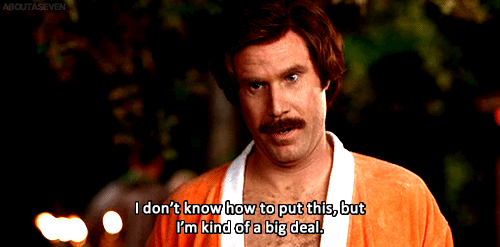
Instead of just listing facts, make your headline relatable. If you’re expanding to Michigan, tell the local you’re coming—and maybe even offer a sale to celebrate!
The trick really, is to think why should anyone read this, and build from there.
#4 Write Something That People Will Want To Share
Picture your headline on the front page or trending on a newsfeed. To go viral, it needs to trigger emotion—joy, surprise, or even anger.
Take this headline: “Bullies Don’t Rule! Donating Anti-Bullying Books to Barnados Children’s Charity.” It makes you want to scream, “Yeah! Bullies don’t rule!” right?
People often share content that reflects who they are or how they want to be seen. Sometimes, we post helpful content to show we care or share opinions to reveal where we stand.
So, when writing your headline, tap into empathy. Make it resonate with your audience, and it’ll naturally spread.
#5 Pique Interest and Trigger Curiosity
Being specific is good, but don’t give everything away.
Some headlines explain the content too well, like the same example from before:
- There are more trucks on the road, and less-qualified drivers, says local lawyer
It’s informative, but it gave me no reason to click. I read the headline and it’s a point noted.
A good headline should tease just enough to make readers want more. The goal is to intrigue, not summarize. But don’t go overboard with inciting curiosity; it’s easy to get yourself tangled up in creating a clickbait headline, and we don’t want that.
#6 Focus on Benefits, Not Features
Your press release is bound to be boring if all you do is inform.
Listing new features or bug fixes won’t excite your audience unless you show them how it makes their lives better. Focus on the bigger picture—how does this update improve things for them?
Avoid headlines like:
- Buildhub Launches New Web Presence
- MOXPOWER Launches on Kickstarter
- Blizzard Mountain Announces New Product
Instead, show the benefits:
- Seattle Startup Combats Food Waste with a Simple, Safe Sticker
This headline explains the impact and stirs curiosity. If you don’t show what’s in it for the reader, they won’t click. Period.
These are just one piece of the puzzle. Now let’s dive into some practical tips for crafting the perfect press release headline.
Press Release Headline Tips
#1 Know Who You're Writing For
Your headline should speak directly to the people you want to reach. Different audiences have different priorities, interests, and ways of communicating. What grabs a tech enthusiast’s attention may not work for a finance professional.
Ask yourself:
- Who am I writing for?
- What matters most to them?
- What language or terms resonate with them?
For example, if you're announcing a new app for busy parents, your headline might focus on how it saves time or makes life easier. For investors, you might emphasize market potential or innovative features.
"New App Helps Parents Reclaim 2 Hours Every Day" speaks to busy parents, while "Tech Startup Disrupts $50 Billion Childcare Market" targets investors and industry watchers.
By tailoring your headline to your audience, you increase the chances of grabbing their attention and compelling them to read further. Remember, a great headline isn't just about what you want to say—it's about what your audience wants to hear.
#2 Research Your Keywords
Catchy headlines aren’t enough anymore. Even if your headline appeals to 98% of the readers, it won’t matter if they can’t find it.
Instead, you need to also get noticed in the search results; and to do that, your press release headline needs to be keyword-focused. Use tools like Google Keyword Planner to find what your audience is searching for and include those phrases.
For example, instead of writing headlines like:
- Gear Up for Summer with Our Latest Product Line!
Focus on specific keywords that help both Google and readers understand your content, like:
- Eco-Friendly Water Bottles Now Available for Summer Adventures.
Journalists and readers sift through countless headlines, so yours needs to get to the point quickly, attracting the right audience and boosting your chances of being noticed.
#3 Follow These Basic Grammar Practices
If you notice, even when something has already happened, it’s written in the present tense in press release headlines.
Example:
Even though these events have already taken place, they’re treated like current news in headlines. So, leave the past tense behind. If you’re talking about something that’s going to happen in the future, you’ll often see a simple “to” to signal what's coming next:
Example:
Furthermore, it’s good to follow that classic advice: use the active voice instead of the passive voice.
Active voice makes headlines more impactful and concise by directly stating the subject and action, creating a clear and immediate message that grabs readers' attention.
For example:
- Active Voice: “Company X Launches New Product” (clear and straight to the point)
- Passive Voice: “New Product Launched by Company X” (a bit slower and less engaging)
See the difference? Active voice makes the headline feel immediate and lively, while passive voice can feel a little clunky. Stick with active voice to keep your headlines sharp.
#4 Use Numbers and Statistics Where Possible
Numbers make everything more concrete.
Example:
- Without numbers: “Company Expands Operations" or “New Product Boosts Company Growth"
- With numbers: "Company Expands Operations by Opening 50 New Locations" or "New Product Boosts Company Growth by 25% in Q2"
See how adding stats paints a clearer picture? Numbers give readers a real sense of scale and importance. Just make sure they’re legit—no made-up numbers or exaggerated claims, because nothing ruins credibility faster than stats that don’t hold up.
#5 Avoid Blog-Style Headlines
Blog headlines often use casual or playful language, which doesn’t work for press releases. Press releases need to sound professional and straightforward.
For example, instead of writing:
- “Guess Who Just Opened 10 New Stores!”
Go with:
- “Company X Expands with 5 New Locations.”
The goal is to focus on the news, not to be catchy. Keep it clear and to the point, so your headline feels like real news while maintaining credibility and professionalism.
#6 Avoid Hyperbole, Sensationalism, and Salesy Language
As mentioned before, the story should be the focus, not self-promotion. Avoid throwing around words like “groundbreaking” or “revolutionary”. They can make your press release sound more like a sales pitch than news.
Instead, stick to straightforward, factual language, and let the actual news do the talking. Keeping it professional ensures that your press release remains trustworthy and newsworthy without sounding like an ad.
#7 Save the Headline for Last
You might think the headline should come first, but hear me out: it’s way easier (and better) to write it last.
Why? Because once you’ve nailed down all the details and crafted the body of your press release, you’ll have a much clearer picture of what the main takeaway is.
Trying to come up with the perfect headline before everything else can actually limit you. The headline might not fully reflect the story, or worse, it’ll force you to tweak the content to fit. Instead, focus on the message first, and let the headline naturally follow.
#8 Brainstorm with AI
When you’re staring at a blank page, struggling to come up with the perfect headline or idea, why not let AI lend a hand? Tools like ChatGPT, Bard, Claude, or AI press release generators are great for helping you brainstorm ideas, suggest new angles, or simply get you thinking in a different way.
You don’t have to rely on AI to do everything, but it’s a handy resource to tap into when you need a little creative boost.
Now that you’ve got the essential tips for writing a great press release headline, let’s see what this looks like in practice. Here are some examples of good press release headlines that follow these guidelines and effectively grab attention.
Examples of Good Press Release Headlines
Best Press Release Headline #1
This headline gets straight to the point while also emphasizing the importance of the initiative. It’s clear that it’s not just a product launch, but something with a bigger purpose—protecting lives from mosquitoes.
The mention of the product name, Bioré GUARD Mos Block Serum, adds clarity about what's being introduced, while "launch in Malaysia" gives it a local relevance that grabs attention in that region. It’s informative without being overly promotional, balancing the seriousness of the cause with the practical product launch.
Best Press Release Headline #2
The present tense and active voice make the headline feel immediate and engaging. By mentioning both companies and the specific region and destination, it grabs the attention of travelers interested in Southeast Asia, as well as people in the travel industry. It’s direct, concise, and focuses on news that matters without overloading the reader.
Best Press Release Headline #3
This one hits the nail on the head by focusing on speed and efficiency, two things anyone in SEO cares about. The headline gets straight to the point, letting readers know SurgeGraph’s new tool will save them time—no fluff, just the benefit.
It’s also intriguing enough to make people wonder, "How does this Auto-Optimizer work?" It’s clear, straightforward, and speaks directly to people who want results fast, which makes it really effective.
Best Press Release Headline #4
This headline does exactly what it needs to—it’s clear, it’s direct, and it makes you take notice. Hitting 20,000 reviews is no small feat, and the number adds weight to the achievement. It’s impressive but not over-the-top, which gives it a reliable, trustworthy feel.
Plus, it’s something people would want to share because reviews are all about trust, and this shows Travel FX has earned it.
Best Press Release Headline #5
This headline is great at teasing just enough to grab attention. "Closely guarded linking secrets"? Of course, you’re going to be curious! Plus, who doesn’t love a free e-book? It promises value without feeling too pushy, and the whole thing feels like something you’d want to share with anyone interested in SEO. All in all, it hits that sweet spot of being intriguing, valuable, and totally worth a click.
Wrapping Things Up
As David Ogilvy put it, your headline is worth 80 cents out of a dollar. There’s no reason you should not put as much thought into your headline as you put into your content.
I know, it’s difficult to be able to come up with the perfect headline immediately. That’s why you have to write lots of headlines before you land on the right one.
Mind you, if the headline doesn’t fit with your press release, skip it. Trying to force it will only hurt your credibility.
If you’re looking for even more help, check out these press release templates to guide you through writing a solid, well-structured press release. Follow the tips above, keep practicing, and soon enough, you’ll be crafting headlines that not only grab attention but also give your press release the kick it needs to stand out.
Free Press Release Template
Tell us where to send your PDF:
